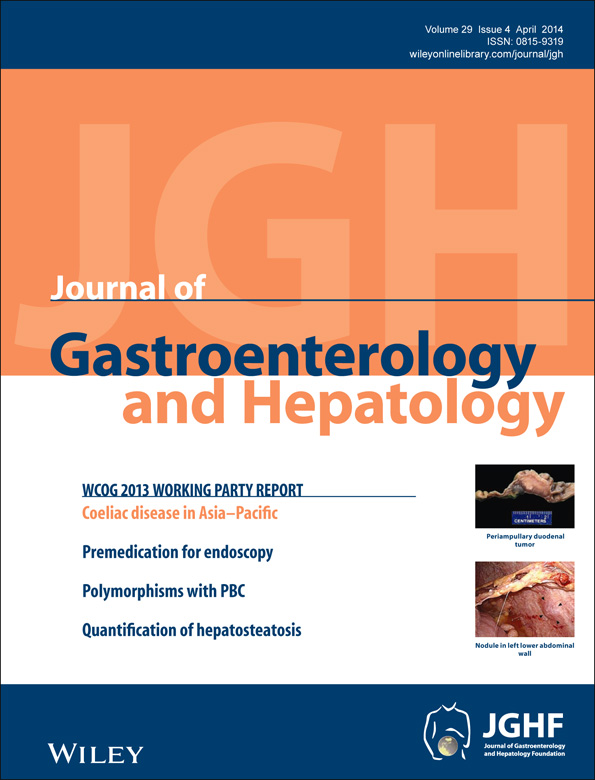Combining TNFSF15 and ASCA IgA can be used as a predictor for the stenosis/perforating phenotype of Crohn's disease
Abstract
Background and Aim
Focusing on TNFSF15 instead of NOD2, we set out to evaluate whether combining serologic and genetic markers could distinguish between Crohn's disease (CD) and ulcerative colitis (UC), and whether they could be used to stratify the disease behavior of Taiwanese CD patients.
Methods
Clinical information, serum isolation, and DNA were collected after obtaining informed consent. The serological markers were analyzed by ELISA kits and the genetic analysis for TNFSF15 single-nucleotide polymorphisms (SNPs) by Sequenom. Statistic analyses were conducted by SAS 9.2 (Cary, NC, USA).
Results
This study included 108 patients (55 CD, 53 UC) and 60 healthy controls. An initial low positive rate and low sensitivity for the serological markers led us to reset the cut-off values. This reset cut-off for ASCA IgA yielded a sensitivity of 0.291 and specificity of 0.925 for differentiating CD from UC patients. The reset cut-off value for p-ANCA (anti-MPO) had a sensitivity of 0.461 and a specificity of 0.817 for differentiating inflammatory bowel disease patients from healthy controls. Among the TNFSF15 SNPs, rs4263839 associated with CD in Taiwan (P = 0.005), haplotype analysis did not increase the association. Combining the genetic marker TNFSF15 (rs4263839) and serological marker ASCA IgA increased the area under the curve from 0.61 to 0.70 for predicting stenosis/perforating phenotype, compared to ASCA IgA alone.
Conclusions
Serological markers need to be tested and tailored to different countries/ethnicities. Combining the genetic marker TNFSF15 with ASCA IgA increased the power of predicting stenosis/perforating phenotype in CD patients with TNFSF15 but not with a NOD2 genetic background.




